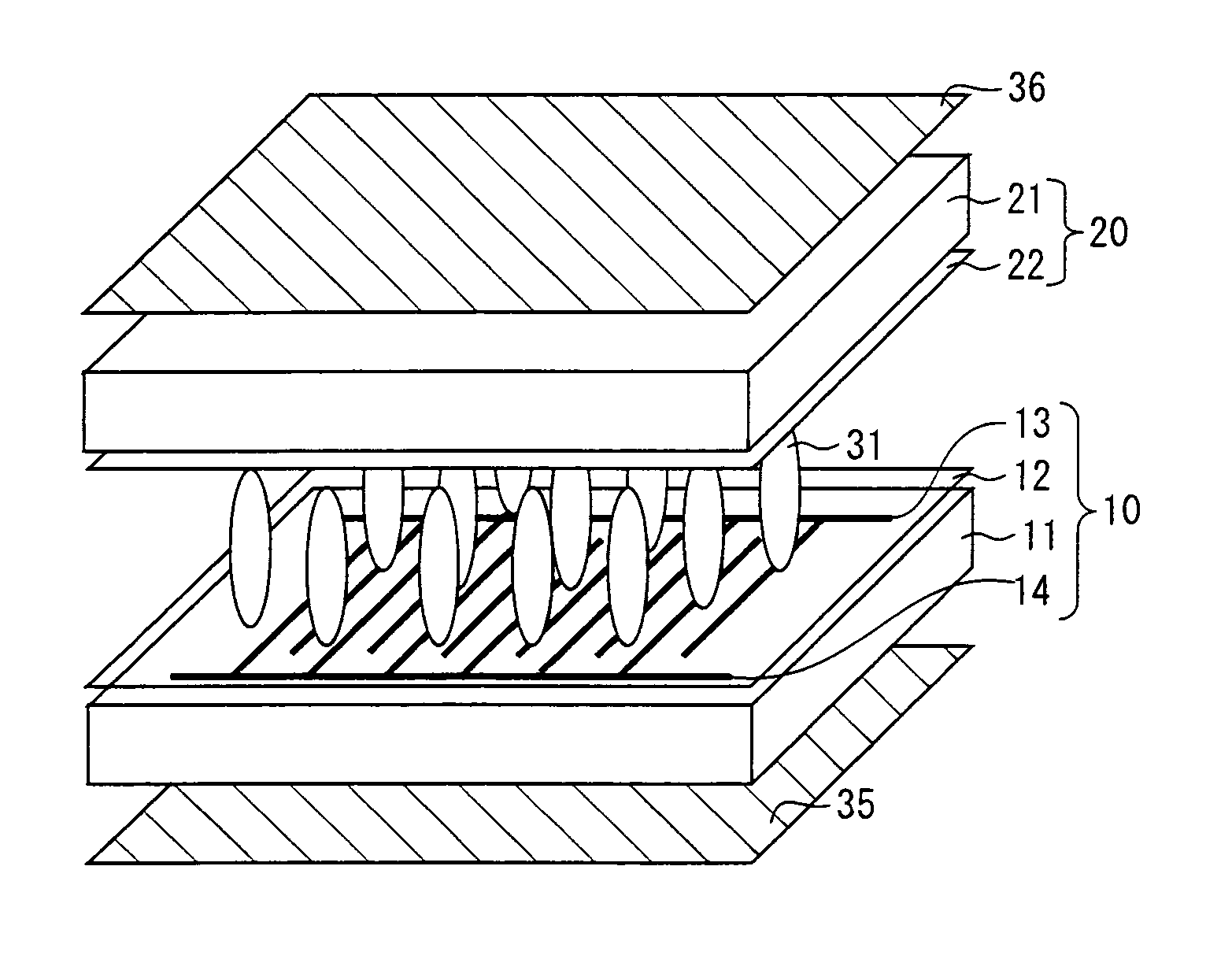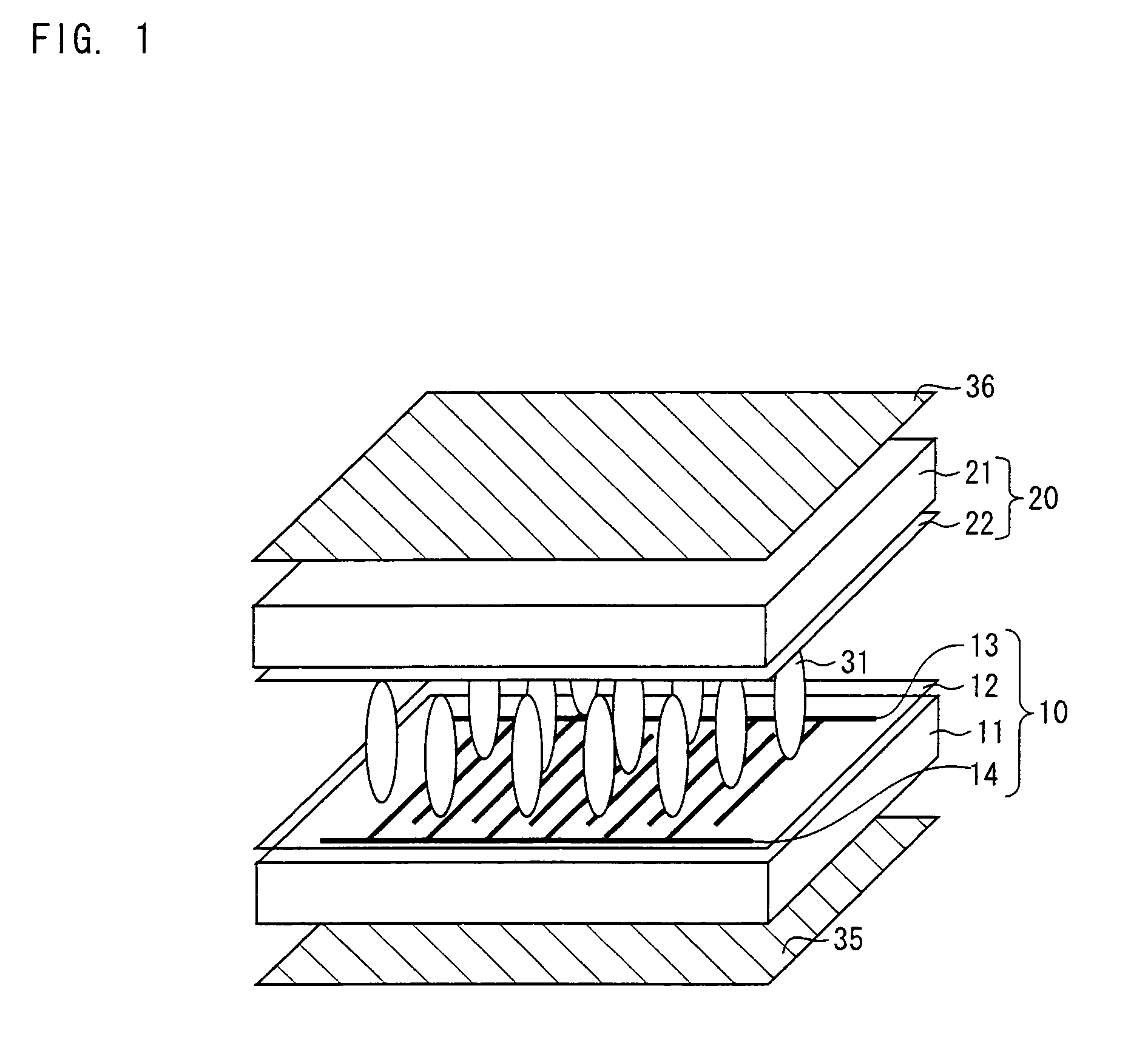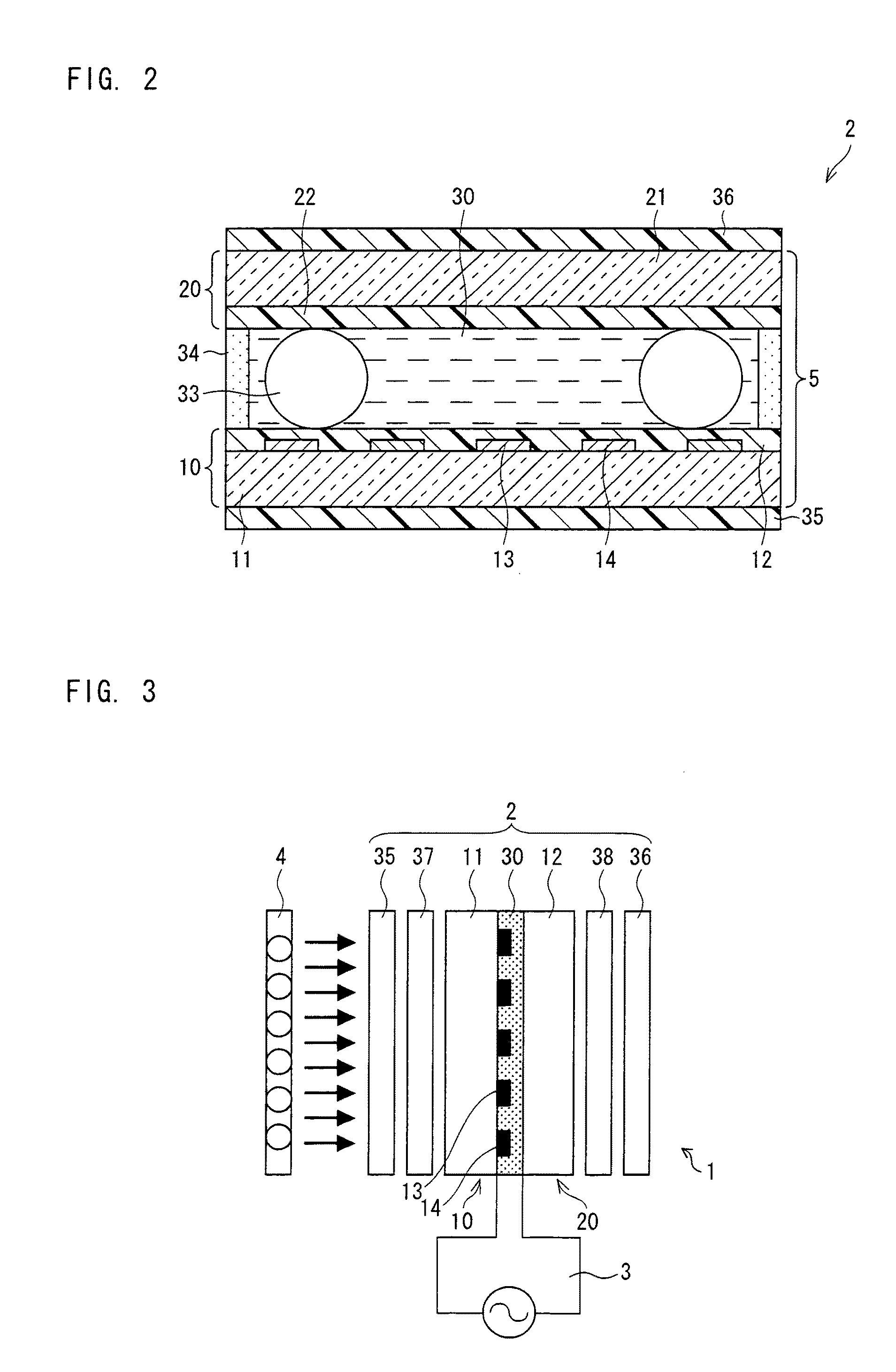Liquid crystal panel and liquid crystal display device
a liquid crystal display and panel technology, applied in liquid crystal compositions, instruments, chemistry apparatus and processes, etc., can solve the problems of slow response and narrow viewing angle of liquid crystal display devices employing tn mode, complex production process, slow response and narrow viewing angle, etc., to achieve wide viewing angle and high contrast
- Summary
- Abstract
- Description
- Claims
- Application Information
AI Technical Summary
Benefits of technology
Problems solved by technology
Method used
Image
Examples
embodiment 1
One embodiment of the present invention is explained below with reference to FIGS. 1 to 17(b).
FIG. 3 is an exploded cross sectional view schematically illustrating an outline configuration of a liquid crystal display device according to the present embodiment.
As illustrated in FIG. 3, a liquid crystal display device 1 of the present embodiment includes a liquid crystal panel 2, a driving circuit 3, and a backlight 4 (illumination device). Configurations of the driving circuit 3 and the backlight 4 are the same as configurations of conventional driving circuit and backlight, and explanations thereof are omitted.
FIGS. 1 and 2 show a typical panel configuration as one example of the liquid crystal panel 2 according to the present embodiment.
FIG. 1 is an exploded perspective view schematically illustrating an outline configuration of a substantial part of the liquid crystal panel 2. FIG. 2 is a cross sectional view schematically illustrating an outline configuration of a substantial par...
example 1
First, an alignment film material “JALS-204” (Product Name, 5% by weight (solid content), γ-butyrolactone solution, produced by JSR Corporation) was applied, by a spin coat method, on a glass substrate that was provided with comb-teeth electrodes 13 and which were made of ITO and that had an electrode width L of 4 μm, an electrode spacing S of 4 μm, and an electrode thickness of 1000 A. Then, the glass substrate with the alignment film material was baked at 200° C. for 2 hours so as to form a substrate 10. A thickness of an alignment film 12 obtained was 600 Å (60 nm).
Next, an alignment film 22 that was identical to the alignment film 12 was formed on a glass substrate 22 so as to form a substrate 20 in the same manner as the substrate 10 except that the comb-teeth shape electrodes 13 and 14 were not provided on the glass substrate 21.
Subsequently, on the substrate 10, resin beads “Micropearl SP” (Product Name, manufactured by Sekisui Chemical Co. Ltd.), as a spacer 33, that had a d...
example 2
Forty liquid crystal panels 2 each having the configuration as shown in FIG. 2 were fabricated in the same manner as Example 1 except that “MLC-6269-000” (Product Name, manufactured by Merck Ltd., p-type nematic liquid crystal material, Δε=17.7 and Δn=0.0984) was used as the liquid crystal material and the electrode width L, the electrode spacing S, and the cell gap d were variously changed.
Next, at 25° C., while an applied voltage was varied from 0V to 20V, a voltage-transmittance characteristic of each of the liquid crystal panels 2 was measured. In the measurement, a rectangular wave of 30 Hz was applied and a wavelength of light for measurement was 550 nm. A relation of the electric application direction and the transmission axis directions of the polarizers 35 and 36 at that time was as shown in FIG. 4. Table 1 shows all relations of the electrode width L, the electrode spacing S, and the maximum transmittance Tmax of the liquid crystal panels 2 each having the cell gap d of 4 ...
PUM
| Property | Measurement | Unit |
|---|---|---|
| width | aaaaa | aaaaa |
| width | aaaaa | aaaaa |
| thickness | aaaaa | aaaaa |
Abstract
Description
Claims
Application Information
 Login to View More
Login to View More - R&D
- Intellectual Property
- Life Sciences
- Materials
- Tech Scout
- Unparalleled Data Quality
- Higher Quality Content
- 60% Fewer Hallucinations
Browse by: Latest US Patents, China's latest patents, Technical Efficacy Thesaurus, Application Domain, Technology Topic, Popular Technical Reports.
© 2025 PatSnap. All rights reserved.Legal|Privacy policy|Modern Slavery Act Transparency Statement|Sitemap|About US| Contact US: help@patsnap.com



